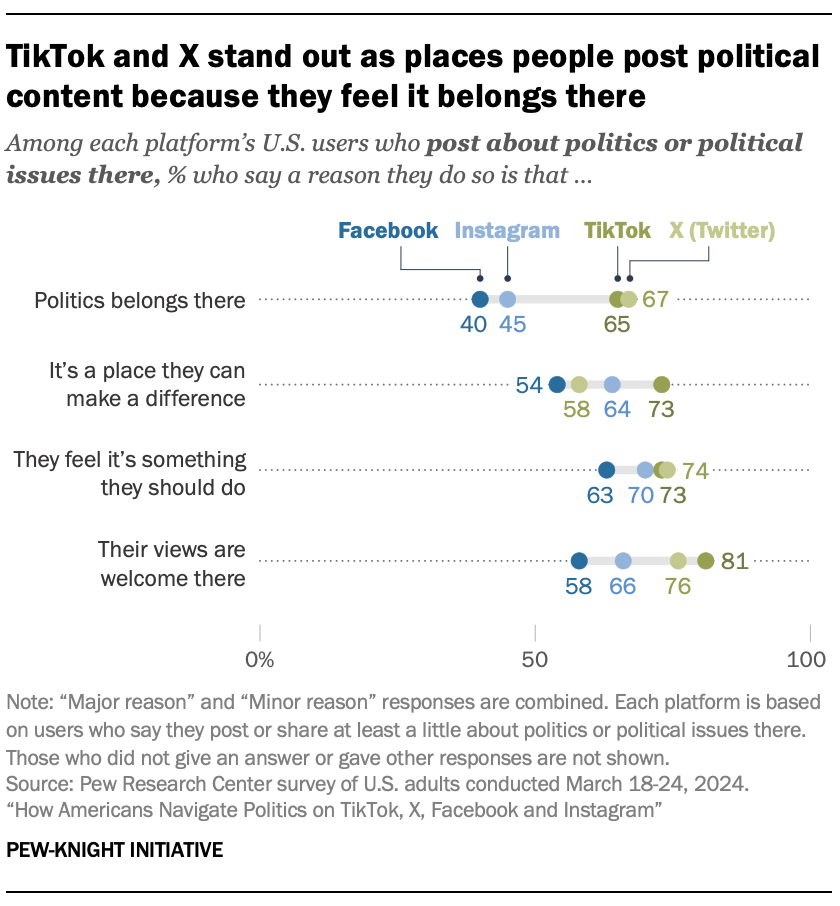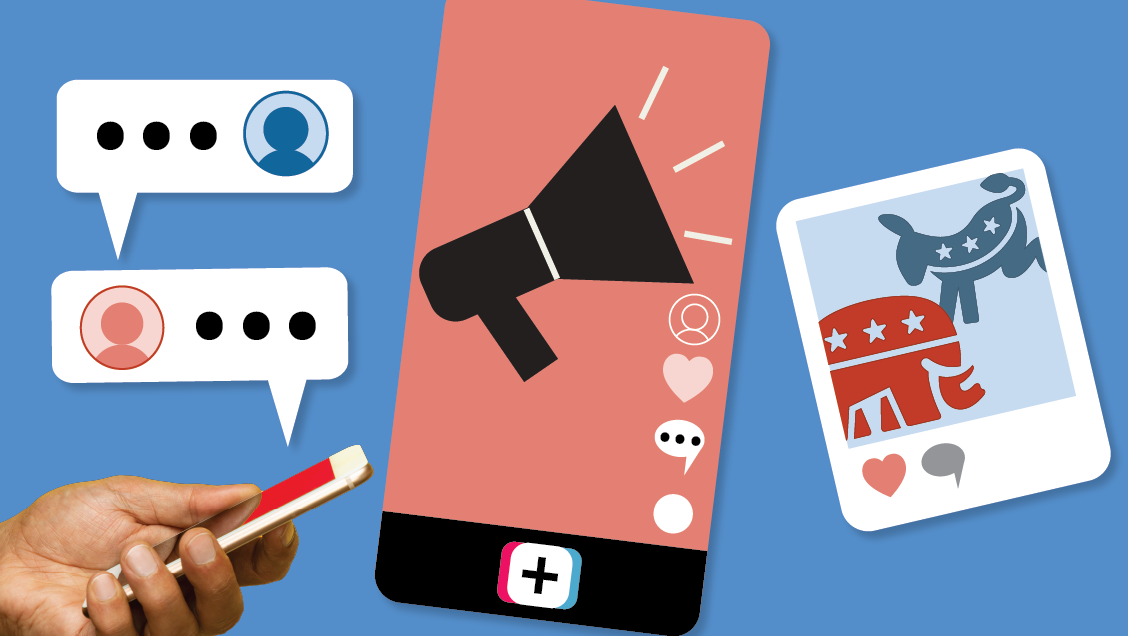Discover Pandipedia
Pandipedia is the world's first encyclopaedia of machine generated content approved by humans. You can contribute by simply searching and clicking/tapping on "Add To Pandipedia" in the answer you like. Learn More
Expand the world's knowledge as you search and help others. Go you!

Introduction to Neural Turing Machines
Neural Turing Machines (NTMs) represent a significant advancement in machine learning, merging the concepts of neural networks with traditional Turing machine operations. This integration allows NTMs to leverage external memory resources, enabling them to interact with data fluidly and perform complex tasks that standard neural networks struggle with.
In essence, an NTM is designed to be a 'differentiable computer' that can be trained using gradient descent. This unique capability means NTMs can infer algorithms similar to those that traditional computer programs execute. The architecture of an NTM comprises a neural network controller and a memory bank, facilitating intricate operations like reading and writing data to memory, akin to how a traditional Turing machine functions[1].
The Architecture of NTMs

An NTM’s architecture integrates several components:
Controller: The neural network that interacts with the external environment.
Memory Bank: A matrix where data is read from and written to through specialized 'read' and 'write' heads.
The focus of the attention mechanism in the NTM allows it to access memory locations selectively. The ability to read and write at various memory locations enables the system to execute tasks that require recalling information or altering previous states, making it a powerful framework for learning and inference tasks[1].
Reading and Writing Mechanisms
The reading mechanism constructs a read vector based on different memory locations using a weighted combination of these locations. This approach allows for flexible data retrieval, where the model can concentrate its attention on relevant memory cells for the task at hand. Similarly, the writing process is divided into erase and add operations, ensuring that data can be efficiently written without corrupting the existing information[1].
Applications and Experiments
Copy Tasks
One of the key experiments conducted with NTMs is the 'Copy Task.' In this scenario, the NTM is presented with sequences of random binary vectors and tasked with reproducing them accurately. The results indicated that NTMs, particularly those with a feedforward controller, significantly outperformed traditional LSTMs in the ability to copy longer sequences. NTMs maintained high performance even when the length of the sequences surpassed the lengths seen during training, demonstrating powerful generalization capabilities[1].
Repeat Copy and Associative Recall
The 'Repeat Copy Task' further tested the NTM's adaptability and memory. Here, the model was required to replicate a sequence multiple times. The findings showed that NTMs could generalize to produce sequences that were not previously encountered during training while LSTMs struggled beyond specific lengths. Notably, the NTM's ability to recall previous items and repetitions indicated it had learned an internal structure akin to a simple programming loop[1].
Following this, the 'Associative Recall Task' allowed the NTM to leverage its memory effectively by associating an input sequence with corresponding outputs. Again, the NTM excelled in comparing it with LSTM architectures and demonstrated its potential to store and recall information dynamically.
Dynamic N-Grams and Priority Sorting
The dynamic N-Grams task assessed whether the NTM could adaptively handle new predictive distributions based on historical data. This task involved using previous contexts to predict subsequent data, showcasing how NTMs manage to learn from sequences flexibly. They achieved better performance compared to traditional models like LSTMs by utilizing memory efficiently[1].
In addition, the 'Priority Sort Task' represented another complex application. Here, the NTM was required to sort data based on priority ratings. The architecture showed significant promise by organizing sequences accurately, illustrating its capability to execute sorting algorithms not easily managed by conventional neural networks[1].

Conclusion
Neural Turing Machines illustrate a progressive step towards more sophisticated artificial intelligence systems by combining neural networks' learning prowess with the computational abilities of Turing machines. The architecture allows NTMs to execute a variety of tasks, including copying sequences, recalling associative data, managing dynamic probabilities, and sorting, with remarkable efficiency and adaptability. These advancements signal a promising future for machine learning, where algorithms can learn to process and manipulate information in ways that closely resemble human cognitive functions[1].
In summary, the exploration of NTMs not only enhances our understanding of machine learning but also opens new avenues for developing AI systems capable of complex reasoning and problem-solving, firmly placing them at the forefront of artificial intelligence technology.
Let's look at alternatives:
- Modify the query.
- Start a new thread.
- Remove sources (if manually added).
- Request a manual search from our human research team.
Generative AI in the Real World

Recent developments in generative artificial intelligence have led to a rapid increase in real-world implementations across industries. As highlighted in one extensive overview, nearly 101 use cases were detailed just over a year ago, and that number has since grown by six times, reflecting the broad reach of AI applications in today’s digital enterprise landscape[1]. Companies ranging in size and sector are now integrating generative AI to improve operational efficiencies, enhance customer experiences, and drive innovation in products and services. This upward trend demonstrates how advanced models such as Gemini, Imagen, and Veo are being transitioned from proof-of-concept experiments to mission-critical solutions in several fields.
Industry Adoption and Practical Examples
The use cases span a wide array of sectors, including retail, finance, healthcare, law, transportation, and more. In retail, companies such as Wendy’s, Papa John’s Pizza, and Uber are leveraging predictive AI tools to manage orders and improve customer service, whether through drive-thru optimizations or app-based ordering systems[1]. In the automotive sector, major players like Mercedes Benz and General Motors have enhanced in-vehicle services, while Samsung has introduced responsive features in its latest phones and home robots. Financial institutions—such as Citi, Deutsche Bank, and Intesa Sanpaolo—are using these innovative solutions not only for fraud detection but also to monitor markets faster and provide new, secure services. The diverse examples also cover areas such as legal document analysis, internal employee productivity improvements through AI-assisted tools in Google Workspace, and even real-time supply chain and inventory management seen in retail and logistics applications[1]. Each instance underscores the goal of reducing manual, repetitive tasks and supporting faster, data-driven decision-making.
Concepts Behind AI Agents
Beyond the broad adoption of generative AI across industries, another crucial development is the design and implementation of AI agents. These agents, powered by large language models (LLMs), have evolved from simple automated responses to sophisticated systems that can dynamically direct their own processes. According to insights from Anthropic, an 'agent' can be defined in various ways. Some implementations are fully autonomous, operating independently to accomplish complex tasks over extended periods, while others function as part of more prescriptive workflows that follow predefined steps[2]. The key idea is that effective AI agents leverage advanced capabilities such as tool integration, retrieval, and memory to generate search queries, select the right tools, and decide what information to retain. This ability allows AI agents not only to process complex inputs but also to interact with external systems in a feedback-driven loop, ensuring that their actions are grounded in real-world results.
Architectural Patterns and Workflow Strategies
Anthropic’s detailed discussion further breaks down agent architectures into several fundamental patterns. One basic pattern is prompt chaining, where a complex task is decomposed into a sequence of simpler steps, each handled by a separate LLM call. This sequential approach is particularly useful for tasks that can be neatly segmented—such as generating marketing copy that is then translated into another language[2]. Another strategy discussed is routing, where incoming tasks are classified and directed to specialized downstream processes. This allows for more tailored responses, as different types of customer queries or technical issues might be optimally resolved by distinct specialized models or workflows[2]. Additionally, parallelization offers methods like voting, where multiple model outputs are generated in parallel and then aggregated to increase accuracy. More dynamic strategies include orchestrator-workers designs, common in complex tasks such as multi-file code changes or comprehensive search operations. There is also the evaluator-optimizer workflow in which one LLM produces an answer, and another provides iterative feedback for refinement. These patterns illustrate that the level of complexity—from simple one-turn implementations to multi-step autonomous agents—should align with the specific requirements of the use case[2].
Best Practices for Designing Effective AI Agents
When developing AI agents, several best practices have emerged. Both sources emphasize starting with simple solutions and progressing to more complex, agentic systems only when necessary. It is advised that developers initially use LLM APIs in a straightforward manner and only adopt additional frameworks if the situation demands extra functionality. While frameworks like Vellum may simplify some low-level tasks—such as orchestrating LLM calls or managing tool definitions—they can also obscure the underlying interactions, making debug efforts more challenging[2]. As a result, understanding the underlying code and prompt engineering techniques is crucial. Developers are encouraged to define clear interfaces for tool usage, provide ample examples within tool documentation, and iterate on tool design to minimize errors, such as ensuring proper formatting and avoiding issues with relative file paths[2]. These careful design considerations help create agent-computer interfaces that are both intuitive and highly effective. Ultimately, the goal is to achieve a balance between the autonomy of the agent and the necessary oversight to avoid compounding errors, thereby ensuring reliability and cost-effectiveness in production environments[1][2].
Let's look at alternatives:
- Modify the query.
- Start a new thread.
- Remove sources (if manually added).
- Request a manual search from our human research team.
Get more accurate answers with Super Search, upload files, personalised discovery feed, save searches and contribute to the PandiPedia.

Social media has transformed the landscape of political campaigning over the past two decades, emerging as a critical tool for engaging voters, especially younger demographics. Its impact can be seen in various dimensions, including the ways candidates communicate, the types of information disseminated, and the overall dynamics of political discourse.
Changing Media Consumption Habits

Younger voters increasingly rely on social media for news compared to older generations. According to Pew Research, over 40% of Americans aged 18-29 cite social media as their primary news source, compared to just 6% of those aged 50-64 and 3% for those aged 65+[1]. This shift towards social media is significant because it allows for a more personalized news consumption experience, often leading to a fragmented news landscape dominated by individual preferences rather than traditional media editorial bias[1].
In contrast, legacy media such as national news channels are facing a bifurcation, where viewership is polarized along party lines. A Pew research analysis found no single news outlet that is universally popular among both Democrats and Republicans, highlighting the echo chamber effect prevalent in traditional media[1][3]. This disparity allows campaigns to target messages effectively based on audience demographics and interests.
Amplifying Campaign Messages
Social media platforms enable politicians to communicate directly with their audience, bypassing traditional media filters. The 2016 U.S. presidential election showcased the powerful role social media played in shaping narratives and extending their reach, as candidates could share messages in real time and respond to developments swiftly[5]. For instance, former President Trump utilized Twitter extensively, making daily updates and responding to critics, which allowed him to control his message and engage supporters actively[2].
Dr. Cliff Lampe from the University of Michigan noted that campaign missteps can gain extended life on social media due to the amplification effect, where users generate additional content around perceived errors, keeping these issues alive for longer than traditional news cycles[2]. This dynamic creates a competitive environment where gaffes and blunders can be continuously revisited, influencing public perception over time.
Targeting and Ad Spending
Political parties are increasingly investing in social media to target specific demographics. For example, campaigns can tailor messages to engage younger voters on platforms like TikTok and Instagram while using Facebook for older audiences[4][7]. According to BBC Wales, Labour spent about £1.4 million on social media ads, illustrating the financial stakes involved in these campaigns[4].
Moreover, social media allows for precise demographic targeting. Political ads can reach users based on location, interests, and even past online behavior, making it possible to engage segments of the electorate that might be harder to reach through traditional methods[4][7].
Risks of Misinformation and Polarization

While social media presents opportunities for engagement, it also poses risks related to misinformation and polarization. The fragmented nature of information dissemination means that campaign messaging can be easily manipulated, and false narratives can spread rapidly within echo chambers[5][6]. This issue was highlighted during the 2016 elections, where misinformation campaigns had a profound impact on public opinion and voter behavior.
Pew Research has found that many Americans contend with political information overload, complicating their ability to discern credible information[6]. The abundant flow of information also creates opportunities for partisan misinformation to thrive on platforms designed for rapid content sharing, reinforcing existing biases among users[5].
Emotional Engagement and Community Building

Social media fosters an environment where emotional engagement can significantly influence political behavior. For instance, supporters often express joy, trust, and anticipation regarding their preferred candidates, leading to a distinct emotional landscape on platforms[3]. Such emotional investments can drive engagement, as campaigns cultivate community dynamics that encourage supporters to share their experiences, opinions, and content related to the election.
As noted in research, the emotional states of users can correlate with their political alignment, which campaigns can leverage to create content that resonates more deeply with their base[3]. This emotional connection is particularly relevant for younger voters who may prioritize authenticity and community over traditional party lines.
Conclusion
Social media continues to reshape political campaigns dramatically by enhancing direct communication, enabling targeted messaging, and creating new forms of engagement among voters. However, it also presents challenges, including the spread of misinformation and political polarization. As political parties increasingly allocate resources to these platforms, understanding the complexities of social media's influence remains essential for both campaign strategists and voters navigating this evolving landscape.
Let's look at alternatives:
- Modify the query.
- Start a new thread.
- Remove sources (if manually added).
- Request a manual search from our human research team.
Let's look at alternatives:
- Modify the query.
- Start a new thread.
- Remove sources (if manually added).
- Request a manual search from our human research team.
Pikachu Illustrator
This rare card is the most expensive Pokémon card ever sold, fetching up to $5.275 million in a recent private sale, originally given to winners of a contest by CoroCoro magazine in the late 90s[7][8].
1st Edition Shadowless Holographic Charizard
This iconic card sold for a record $420,000, making it one of the most sought-after Pokémon cards, especially in Gem Mint condition[3][8].

Prototype Holographic Blastoise
One of four prototype cards designed to convince Nintendo to launch the Pokémon Trading Card Game, it sold for $360,000[7][8].

Kangaskhan Holographic Trophy Card
A promotional card from a parent-child tournament in 1998, this card fetched $150,100 at auction, making it one of the rarest trophy cards[7][8].
2006 Pokémon World Championships No. 2 Trainer Card
This ultra-rare card sold for $110,100, believed to have only three copies in existence[7][8].

Super Secret Battle No. 1 Trainer Card
Known for its extreme rarity, only seven were made, and it sold for $90,000[7][8].
Tropical Mega Battle Tropical Wind Card
A card issued to participants of a 1999 tournament, sold for $65,100; only a handful exist[7][8].
Master’s Scroll Promo Card
Awarded to members of the Pokémon Daisuki Club who amassed a significant number of points, it sold for $35,200[7][8].
1995 Topsun Charizard Blue Back No Number Error
Sold for $493,230, this unique card is highly sought after by collectors for its rarity and printing errors[3][7].
1st Edition Holographic Lugia
A card from the Neo Genesis set that sold for $144,300; its rarity stems from print issues[7][8].
1998 Japanese Promo Family Event Holo Kangaskhan
Sold for $78,000, it was awarded to winners of a family tournament, making it highly collectible[7][8].
Gold Star Umbreon
A sought-after card from the Pokémon Player's Club, sold for $78,000 due to its rarity and artwork appeal[7][8].
Gold Star Rayquaza
A card from the EX Deoxys set, it sold for $44,400, making it one of the more valuable modern Pokémon cards[7][8].
1999 First Edition Holographic Blastoise
This card reached sales around $45,000, making it a staple in any serious collector's collection[3][8].
1st Edition Holo Chansey
Sold for $36,877, this card is rare due to its limited print run, especially in Gem Mint condition[7].
Dragon Frontiers Gold Star Charizard
This card set a sales record of $60,066 due to its limited availability and collector interest[7][8].
1998 Pokémon Japanese Promo Tamamushi University Magikarp
This card sold for $67,000; it's one of the more valuable Magikarp cards due to its tournament ties[7][8].
1999 Pokémon Tropical Mega Battle No. 2 Trainer
This card sold for an impressive amount, reflecting its limited distribution and desirability among collectors[7][8].
2021 Pokémon Master’s Key
A card from the 2010 World Championships, which sold for over $66,000 due to its rarity[7][8].
1999 Pokémon Base Set Shadowless Holo Gyarados
Noted for its scarcity, it has fetched considerable auction prices of around $20,000[7].
1998 Pokémon Gold Star Torchic
Sold for $50,000 at auction; its value is attributed to its rarity and desirability among collectors[7].
Let's look at alternatives:
- Modify the query.
- Start a new thread.
- Remove sources (if manually added).
- Request a manual search from our human research team.

The excitement for Glastonbury 2025 is already building as the iconic festival prepares for its return to Worthy Farm from June 25 to 29, 2025. With ticket sales fast approaching, rumors are swirling regarding who might take the coveted headline slots at one of the world's most famous music festivals. This report collates predictions and insights from multiple sources to give a clearer picture of what may unfold in 2025.
Ticket Sales and Demand
Tickets for Glastonbury 2025 will go on sale on November 14 for ticket and coach packages, followed by general admission tickets on November 17. It’s anticipated that millions will compete for the limited 210,000 tickets, mirroring last year's frenzy where tickets sold out in just 58 minutes amidst 2.5 million hopefuls attempting to secure entry[1][9]. This year's ticket prices are set at £373.50 plus a £5 booking fee[6][9].
The festival is noteworthy not only for its musical acts but also for its rigorous ticketing system designed to prevent scalping, wherein prospective attendees must be registered in advance[5][8].
Headliner Speculations

As expectations rise for Glastonbury 2025, numerous artists are in the running to headline the Pyramid Stage. While no formal announcements have been made, several names have emerged as favorites, with speculation fueled by their upcoming tours and recent successes:
Rising Stars and Big Names
Olivia Rodrigo: Following her highly anticipated performance at BST Hyde Park on June 27, which coincides with Glastonbury weekend, her name is heavily discussed as a potential headliner. Bookmakers have given her odds as favorable as 1/3, suggesting strong interest from both fans and organizers eager to capitalize on her rising star power[2][3][9].
Sam Fender: Another strong candidate, Fender's success on the UK festival circuit positions him well for a headline slot. He has been booked for multiple summer festivals in 2025, and his odds stand at 3/1 with bookies[3][9].

title: 'Sam Fender' and caption: 'a man holding a guitar and singing' Harry Styles: Having made waves globally post-One Direction, Styles continues to be a fan favorite with odds ranging from 4/1 to 7/4. His unique blend of pop and rock makes him an appealing choice for Glastonbury[2][4][9].
Rihanna: Following her memorable performance at the 2023 Super Bowl, Rihanna is under consideration for a spot at Glastonbury, especially as preparations for her long-awaited album are underway[4][5][9].
Eminem: His potential debut at Glastonbury could mark a significant moment for the festival, especially given the positive reception rap has received in recent years. Eminem's odds sit at 6/4, making him a strong contender[2][4].
Established Legends
There’s also buzz around artists who may occupy the 'Legend' slot, with names like Stevie Wonder and Ed Sheeran suggested, both of whom would appeal to a wide demographic given their storied careers and hit catalogues[4][6].
Stevie Wonder, synonymous with festival magic, could potentially draw crowds eager for his soulful sounds, especially after years of rumors surrounding his participation[6][9].
Ed Sheeran, who has headlined before, remains a strong bet due to his connection to the festival and capacity to engage audiences with his extensive catalog[9].
Emerging Acts
Newer artists like RAYE and Fred Again are gaining traction in discussions about Glastonbury's lineup. RAYE's recent recognition and hit singles make her an appealing choice, particularly as Glastonbury aims for a more balanced gender representation in its headliners[4][7]. Fred Again, who has been a rising star in electronic music, is listed at 10/11 for a possible headline slot, although DJs often find themselves on smaller stages at the festival[9].
The Festival's Legacy and Expectations
Glastonbury in 2025 is poised to be particularly special as it will not return until 2027 due to its planned fallow year in 2026. This decision has amplified the anticipation, leading festival organizers to potentially secure more iconic performances[1][3].
Fans and bookies alike are buzzing with speculation, and while the full lineup typically won't be announced until March 2025, the groundwork laid by the current rumors ensures that Glastonbury 2025 is already shaping up to be a memorable event[8][9].
In conclusion, while the official headliner list remains to be revealed, the excitement surrounding Glastonbury 2025 reflects the festival's enduring place in the music scene, combining established artists with emerging talent for a diverse and engaging experience.
Let's look at alternatives:
- Modify the query.
- Start a new thread.
- Remove sources (if manually added).
- Request a manual search from our human research team.
Get more accurate answers with Super Search, upload files, personalised discovery feed, save searches and contribute to the PandiPedia.
Let's look at alternatives:
- Modify the query.
- Start a new thread.
- Remove sources (if manually added).
- Request a manual search from our human research team.

An atom is the smallest unit of matter that retains the properties of a chemical element. It consists of a central nucleus made up of protons, which carry a positive charge, and neutrons, which are neutral. Electrons, which have a negative charge, orbit the nucleus in designated energy levels called electron shells. Most of the mass of the atom is concentrated in the nucleus, while the electrons orbit far away, making the atom predominantly empty space[1][4][5].
The atomic number, which is the number of protons in the nucleus, determines the element's identity. In a stable, neutral atom, the number of protons equals the number of electrons, resulting in no net charge[2][6].
Let's look at alternatives:
- Modify the query.
- Start a new thread.
- Remove sources (if manually added).
- Request a manual search from our human research team.

As of the end of 2021, arXiv had two million articles in its repository, having reached this milestone by that time. The submission rate was about 16,000 articles per month as of April 2021[1].
Let's look at alternatives:
- Modify the query.
- Start a new thread.
- Remove sources (if manually added).
- Request a manual search from our human research team.

Puns work by exploiting the multiple meanings of words or the phonetic similarities between them, creating a humorous or rhetorical effect. They typically rely on homophones, which are words that sound alike but have different meanings, or homographs, which are words spelled the same but with different meanings[2][4]. For instance, a classic pun is 'a boiled egg every morning is hard to beat,' playing on the meanings of 'beat'[2].
Using puns requires the reader to recognize both meanings to appreciate the humor fully. They can serve various purposes beyond generating laughter, such as enhancing the reader's interpretation or adding layers of irony[1][3][5].
Let's look at alternatives:
- Modify the query.
- Start a new thread.
- Remove sources (if manually added).
- Request a manual search from our human research team.














































